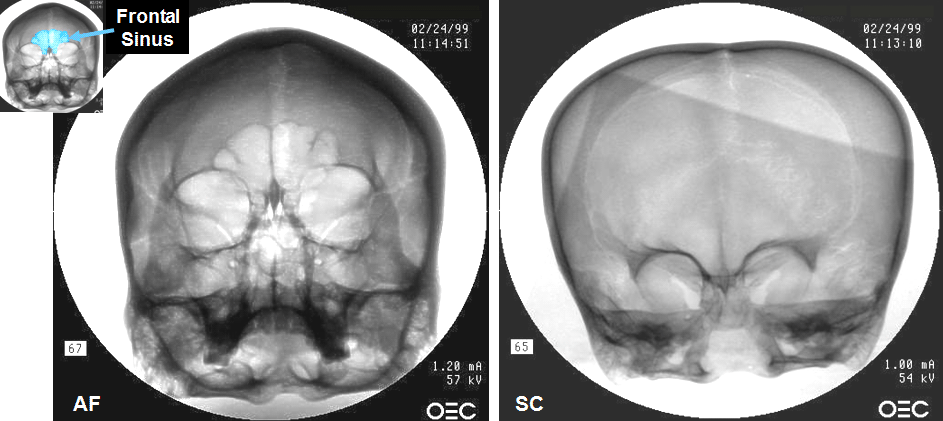DID THE LARGE INNER EARS OF THE STARCHILD GIVE IT SUPER HUMAN HEARING?
One of the early tests done on the Starchild Skull was a standard CT Scan. This scan showed that the inner ears of the Starchild Skull are a full 30% larger than in a human. This on its own would not give the Starchild super hearing, but the thin, light bone of the Skull almost definitely would.
Dr. Kevin Rohmann of Cornell University explains "as the eardrum vibrates it pushes against a series of bones, three in humans, that transfer the vibrations into the fluid-filled inner ear. Just like the eardrum, if these bones are light they can vibrate faster which means better high frequency hearing. Heavy bones reduce high frequency vibrations and favor hearing low frequency sounds."
Based on this evidence we think that the Starchild Skull may not have been able to hear very low frequency sounds, but would have been able to hear much higher frequency sounds than any human. It may also have been able to sense vibrations and other subtle differences in resonance that a human would miss.

CT SCAN OF THE STARCHILD SKULL SHOWING INNER EAR
f this is an alien trait then it is perhaps linked to the total lack of frontal sinus in the Starchild Skull. Your frontal sinus is the empty space in your forehead that fills with mucus and makes you miserable if you have a cold, but as far as experts can tell it has no practical function, much like an appendix. Experts theorize that it may have something to do with vocal resonance, or perhaps they help to humidify and regulate the temperature of the air we breath, but the general consensus is that we could live perfectly well without them. If a being somehow communicated or had some other connection to frequencies and resonances, having a big empty chamber in your forehead could create echos and other issues that would interfere with your perception. If the Starchild Skull belongs to a new species, as be think it does, it is possible that the species all lack a frontal sinus and that this is an important factor in their ability to communicate.
Having larger inner ears probably also means it had much better balance than a normal human. While balance is a trait that can be honed with practice, having a head start with 30% larger inner ears would definitely help. It is difficult to know if larger inner ears would help in a low gravity environment, but that is also something to think about.

